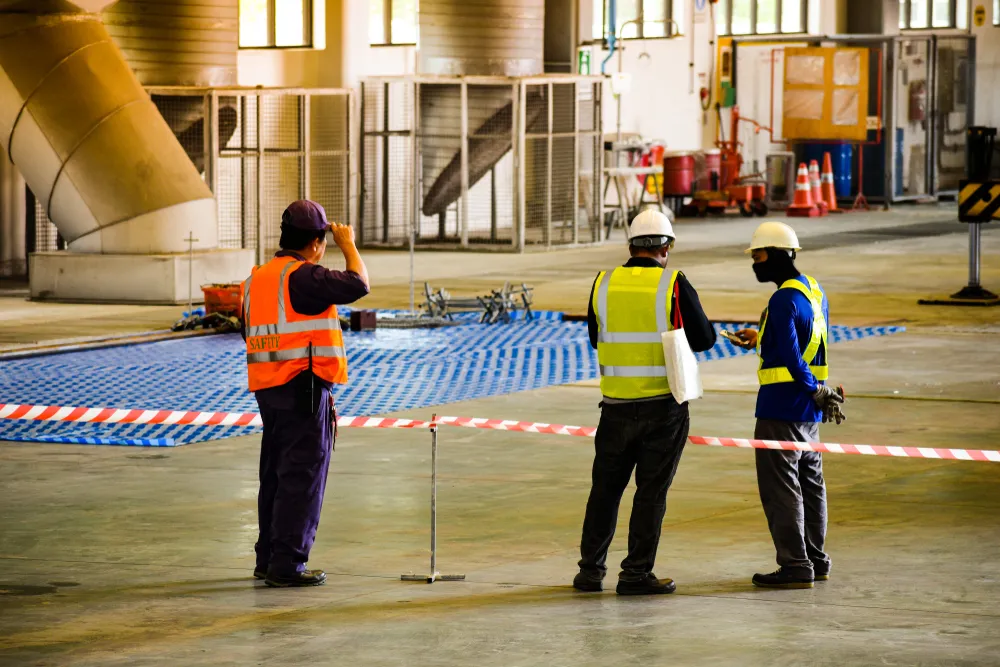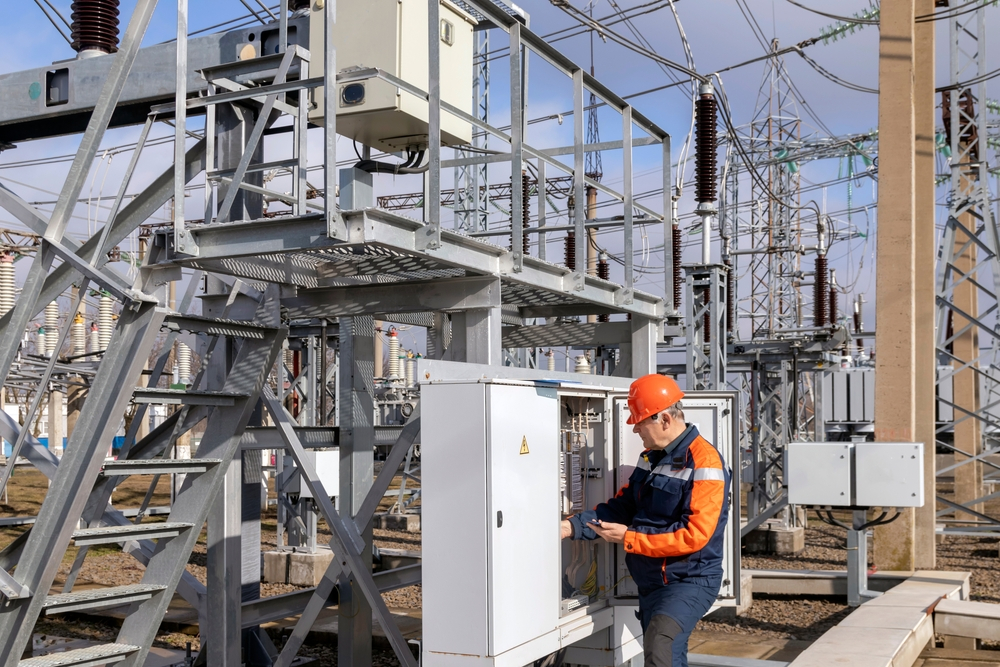An Unbiased View of Roar Solutions
An Unbiased View of Roar Solutions
Blog Article
Roar Solutions for Beginners
Table of ContentsGetting My Roar Solutions To WorkAll About Roar SolutionsWhat Does Roar Solutions Do?
In such an atmosphere a fire or surge is possible when three basic problems are fulfilled. This is commonly described as the "harmful area" or "combustion" triangular. In order to secure installations from a potential explosion a method of evaluating and categorizing a potentially dangerous location is called for. The function of this is to make sure the proper selection and installation of devices to inevitably stop a surge and to ensure safety and security of life.
(https://www.reverbnation.com/roarsolutions)
No tools must be installed where the surface temperature of the devices is higher than the ignition temperature of the given risk. Below are some typical dust harmful and their minimum ignition temperature. Coal Dust 380C 225C Polythene 420C (thaws) Methyl Cellulose 420C 320C Starch 460C 435C Flour 490C 340C Sugar 490C 460C Grain Dust 510C 300C Phenolic Material 530C > 450C Aluminium 590C > 450C PVC 700C > 450C Soot 810C 570C The probability of the danger being existing in a concentration high adequate to trigger an ignition will certainly vary from place to place.
Hazardous area electric tools perhaps made for use in greater ambient temperatures. Area Repair Work By Authorised Employee: Complex screening may not be needed however certain procedures might require to be complied with in order for the tools to maintain its 3rd party ranking. Each item of devices with a dangerous score must be reviewed independently.
The Main Principles Of Roar Solutions
The devices register is a detailed database of tools records that includes a minimum collection of fields to determine each thing's place, technological parameters, Ex-spouse category, age, and ecological information. This information is important for monitoring and taking care of the tools effectively within unsafe locations. In contrast, for regular or RBI sampling assessments, the grade will be a mix of Detailed and Close evaluations. The proportion of Thorough to Shut assessments will be established by the Devices Threat, which is analyzed based upon ignition danger (the possibility of a resource of ignition versus the chance of a combustible atmosphere )and the harmful location category
( Area 0, 1, or 2). This variant will certainly additionally affect the resourcing requirements for work preparation. As soon as Whole lots are specified, you can create tasting strategies based on the sample size of each Whole lot, which refers to the number of arbitrary devices items to be examined. To establish the needed sample size, two aspects need to be evaluated: the size of the Lot and the group of assessment, which indicates the degree of effort that need to be used( minimized, regular, or enhanced )to the examination of the Whole lot. By combining the classification of assessment with the Great deal dimension, you can then develop the ideal rejection requirements for an example, implying the allowable number of damaged products found within that example. For even more information on this procedure, please describe the Energy Institute Standards. The IEC 60079 typical recommends that the optimum period in between assessments need to not surpass 3 years. EEHA examinations will certainly additionally be performed outside of RBI campaigns as component of scheduled upkeep and devices overhauls or repairs. These assessments can be attributed towards the RBI example sizes within the affected Great deals. EEHA examinations are performed wikipedia reference to identify faults in electrical devices. A heavy racking up system is important, as a solitary tool may have several mistakes, each with differing levels of ignition threat. If the consolidated rating of both assessments is less than twice the fault rating, the Great deal is considered appropriate. If the Lot is still thought about inappropriate, it needs to go through a complete inspection or validation, which might trigger stricter evaluation methods. Accepted Whole lot: The reasons for any faults are identified. If a typical failing mode is located, added equipment might call for inspection and fixing. Mistakes are categorized by extent( Safety and security, Integrity, Housekeeping ), ensuring that immediate issues are evaluated and addressed immediately to mitigate any effect on security or procedures. The EEHA database need to track and record the lifecycle of faults together with the restorative actions taken. Executing a robust Risk-Based Inspection( RBI )method is essential for making sure conformity and safety and security in taking care of Electrical Equipment in Hazardous Locations( EEHA) (hazardous area course). Automated Mistake Scoring and Lifecycle Administration: Effortlessly take care of faults and track their lifecycle to boost assessment accuracy. The introduction of this assistance for risk-based evaluation further reinforces Inspectivity's position as a best-in-class solution for regulatory compliance, as well as for any type of asset-centric evaluation use situation. If you are interested in learning much more, we invite you to ask for a demonstration and uncover just how our service can transform your EEHA monitoring procedures.
The Buzz on Roar Solutions

In regards to eruptive threat, a dangerous area is a setting in which an explosive atmosphere is present (or may be expected to be present) in quantities that call for special safety measures for the building and construction, installment and use of equipment. eeha courses. In this write-up we discover the challenges dealt with in the office, the threat control actions, and the called for competencies to function securely
These compounds can, in certain problems, form eruptive environments and these can have major and awful effects. Most of us are acquainted with the fire triangular eliminate any type of one of the 3 aspects and the fire can not occur, but what does this mean in the context of hazardous areas?
In a lot of circumstances, we can do little regarding the levels of oxygen airborne, however we can have significant influence on resources of ignition, for example electrical tools. Hazardous areas are documented on the harmful location classification illustration and are determined on-site by the triangular "EX-SPOUSE" sign. Here, amongst various other crucial info, zones are split into 3 kinds relying on the hazard, the likelihood and period that an eruptive atmosphere will certainly exist; Zone 0 or 20 is regarded one of the most harmful and Area 2 or 22 is considered the least.
Report this page